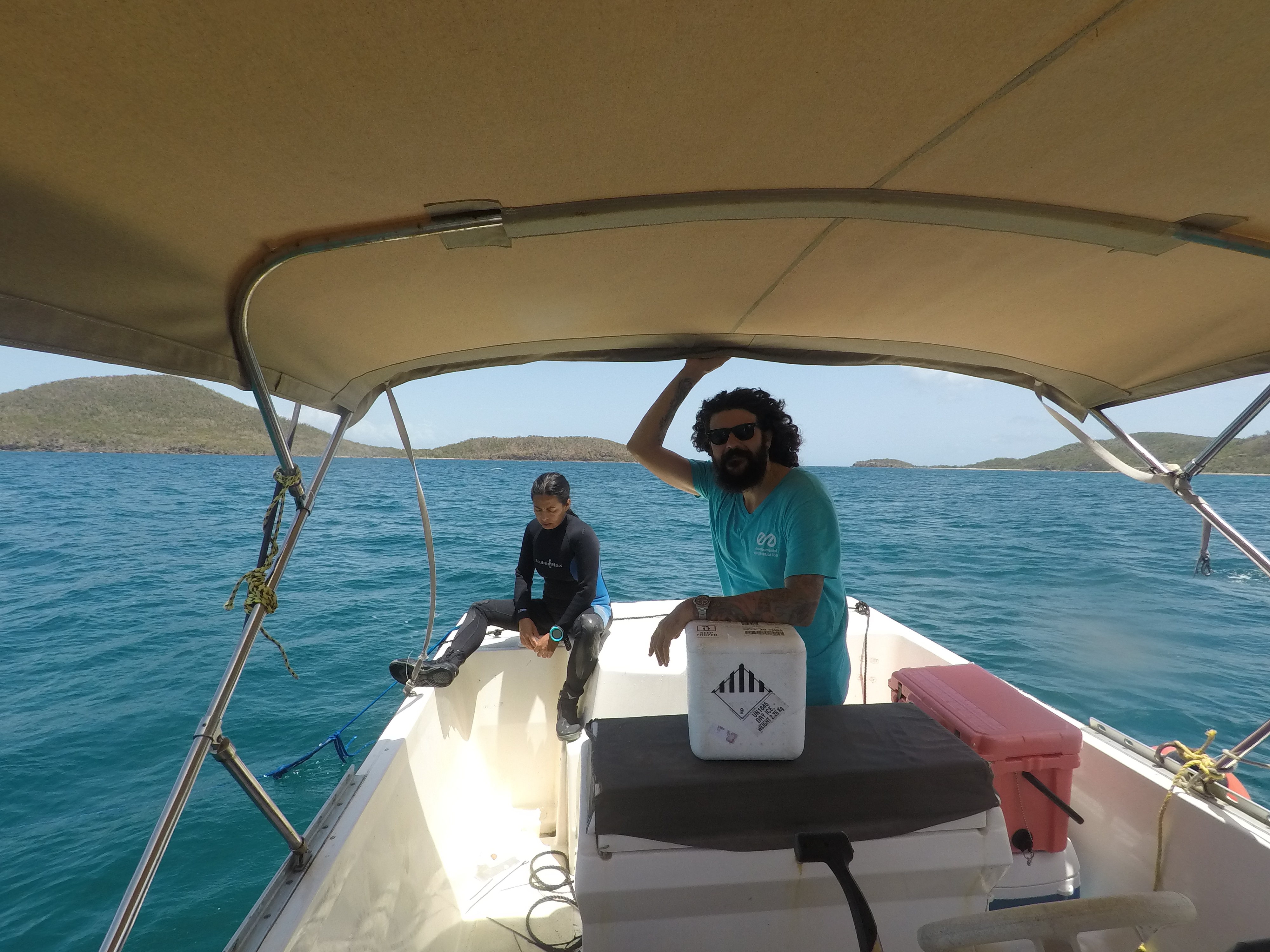However, after several months of work in the reef, it was only during this last expedition that the conditions were right to shoot some aerial footage of our fieldwork sites using drone technology courtesy of FIU’s CREST-CAChE. You can see some of the takes in the video below (recorded by Ph.D. student Javier Rodríguez-Casariego), revealing yet another angle of the island’s natural beauty. By analyzing these media files, we will be able to explore better and characterize the distribution of the different habitats surrounding our work sites, providing new and exciting clues into the biotic and abiotic drivers governing the recovery of Culebra after the impact of last year’s hurricanes.
The work went really smooth throughout the course of this expedition, with our learning curve increasing really fast thanks to all the mistakes we made in the past! We have come a long way since last November when we first started assessing these sites after hurricane Maria’s impact, and our previous errors have served as guidance to polish our trip arrangements, data collection, sample preparation, and analyses. During this trip we monitored demographic and population parameters as usual, including survival and growth of our coral outplants, we took samples for epigenetic and physiological analysis and measured photobiology parameters such as photosynthetic efficiency using PAM fluorometry. We found a slight increase in mortality at our Carlos Rosario sites and even more algal growth than in our last trip, suggesting a persistent impact of eutrophication.
This change in the reef is very interesting, and we will follow the nutrient and light dynamics of the sites to try to elucidate the source of this event. Outside the water, we were once again guests of the SAM house in Culebra. However, this time we took control of the food department by cooking all our meals, thus avoiding the feared “Pizza Paradox” (see last month’s entry).
Overall, the trip was very successful. We will come next month for the first trimestral monitoring which will require a complete sampling for microbiome, demography and epigenetic analyses.












